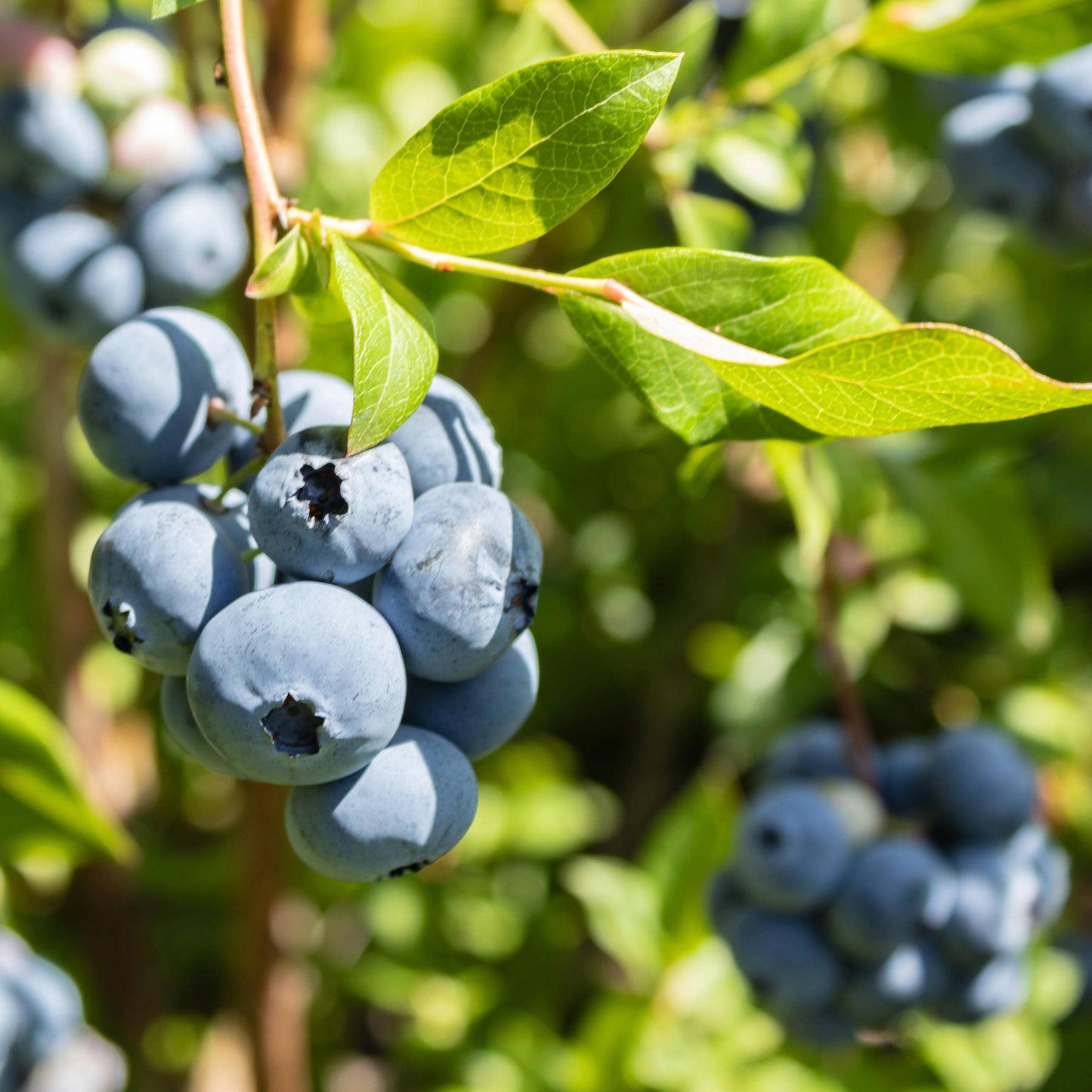Vaccinium corymbosum 'Chippewa'
Vaccinium corymbosum 'Chippewa' - 'Chippewa' Dwarf Blueberry
Vaccinium corymbosum 'Chippewa' - 'Chippewa' Dwarf Blueberry
Exposure
- Sun
- Part-Sun
Rusticity
Bloom time
- May - June
- Large, sweet berries!
- Ultra-hardy (Zone 3)!
- Very productive dwarf plant!
- Vibrant fall foliage!
- Compact, ideal for small spaces!
Discover the 'Chippewa' Dwarf Blueberry, a compact and ultra-hardy variety that will charm you with its productivity! Ideal for small gardens, borders, or container growing, this blueberry bush offers an early harvest of large, firm, and deliciously sweet berries. Its elegant habit and vibrant fall foliage make it an addition that's as beautiful as it is delicious to your landscape.
Harvest: Production & Flavours
The 'Chippewa' Blueberry is a reliable producer that will reward you with large berries early in the season. Its yield is excellent for a plant of its size, ensuring a good quantity of flavourful fruit to enjoy fresh or to process.
- Harvest Period: July
- Visual Description: Large, round berries, a beautiful light blue, with a firm texture and a slight waxy bloom.
- Flavour Profile: Very sweet, with just enough acidity to balance the taste. The flesh is juicy and pleasant in the mouth.
- Culinary Uses: Perfect for fresh consumption, desserts, jams, sauces, or for freezing to extend the enjoyment.
Planting Guide
To ensure the success of your 'Chippewa' blueberry bush, follow these essential steps:
- Ideal Location: Plant your 'Chippewa' in full sun to optimize fruit production. A well-ventilated site potentially protected from dominant winds is an asset.
- Soil Preparation: This blueberry bush thrives in very acidic soil (ideal pH between 4.5 and 5.5), rich in organic matter, and with excellent drainage. Generously amend the soil with sphagnum peat, acidic compost, or a specialized potting mix for acid-loving plants.
- Planting: Dig a hole twice as wide as the root ball and just as deep. Position the plant so the top of the root ball is level with the soil surface. Fill with your amended soil mix and gently tamp down. Space plants approximately 60 to 90 cm (2 to 3 feet) apart for optimal development.
- Pollination:
- Type: Self-fertile, but the presence of another blueberry cultivar nearby will significantly increase your yield.
- Suggested Partners: To maximize your harvest, plant varieties like 'Northblue' or 'Northsky' nearby.
Care Guide
- Watering: Keep the soil consistently moist, especially during fruit formation and dry periods. Deep and regular watering is crucial, avoiding standing water.
- Fertilization: In early spring, apply a fertilizer specifically formulated for acid-loving plants, carefully following the manufacturer's instructions.
- Pruning: Prune in late winter or early spring, before new growth appears. Remove dead, diseased, or weak wood, and thin out older branches (over 5-6 years) to stimulate the growth of new productive shoots.
- Protection:
- Against Birds: To protect your valuable berries, install bird netting as soon as the fruits begin to colour.
- Winter Protection: Thanks to its great hardiness (Zone 3), 'Chippewa' generally does not require additional winter protection in Quebec. A good layer of mulch at the base of the plant will help insulate the soil.
Plant details
Dimensions
Dimensions
Characteristics
Characteristics
Habit:
- Dwarf
- Compact
- Upright
Flowering colours:
- White
- Slightly Pink
Plant needs
Plant needs
Watering:
- Moist soil
Maintenance:
- Easy
Soil requirement:
- Acidic
- Well-Drained
- Rich in Organic Matter
Features
Features
Resistance:
- Diseases
- Cold
Attract:
- Birds
- Butterflies
- Pollinators
- Bees
Use:
- Mass Planting
- Edible Garden
- Small Garden
- Rock Garden
- Border
- Groundcover
- Pots and Containers
Attribute:
- Edible Fruits
- Fall Foliage
- Very Hardy
- Good Yield for Dwarf Plant
- Ideal for Small Spaces








